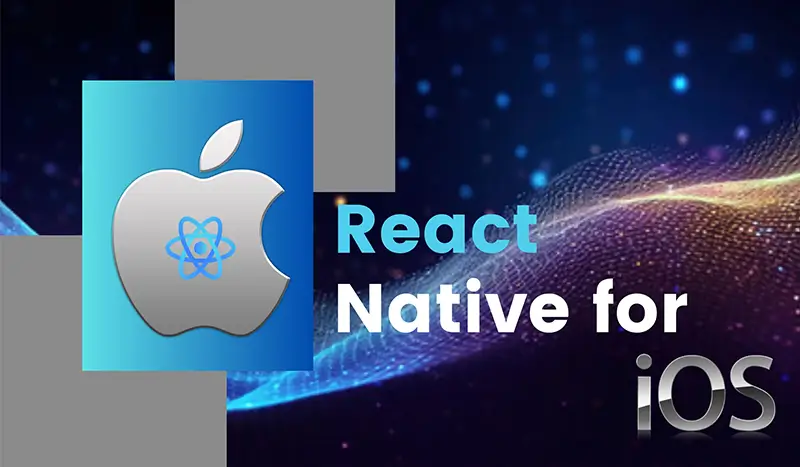In the ever-evolving landscape of mobile app development, React Native has emerged as a game-changer, revolutionizing the way developers create robust and engaging applications for iOS. This innovative framework bridges the gap between traditional/native app development and modern web technologies, offering a plethora of advantages that streamline the development process and enhance the user experience. In this article, we will drive into the world of React Native for ios , uncover its core concepts, and explore why it’s becoming the go-to choose for react native for ios development.
What is React Native?
At its core, React Native is an open-source framework developed by Facebook that allows developers to build native mobile applications using JavaScript. Unlike traditional methods that require separate codebases for different platforms, React Native enables developers to create cross-platform apps by writing a single codebase that can be shared between iOS and Android platforms. This approach significantly reduces development time, effort, and resources.
Explanation of React Native and its Purpose
React Native leverages the power of React, a JavaScript library initially designed for building user interfaces on the web. By extending Reacts capabilities to mobile app development, React Native enables developers to create UI components that map directly to native components. This means that React Native does not use web views; instead, it renders components using native APIs. As a result, apps built with React Native look, feel, and perform just like native apps.
Comparison with Traditional/Native App Development
In traditional/native app development, developers often need to maintain separate codebases for each platform, leading to increased development time and complexity. React Native solves this problem by enabling code reusability between iOS and Android platforms. This not only reduces the workload but also ensures consistency across platforms.
React Native for iOS Development Advanatages
Faster Development Cycles
React Native’s hot-reloading feature allows developers to see real-time changes as they modify the code. This feature significantly speeds up the development process by eliminating the need to recompile and restart the app every time a change is made. Developers can instantly preview their changes on the simulator or device, resulting in a more efficient and iterative development cycle.
Code Reusability Between iOS and Android
One of the most significant advantages of React Native is the ability to share a single codebase between iOS and Android apps. This dramatically reduces development effort, as developers can write code once and deploy it on both platforms. This unified approach not only accelerates development but also simplifies maintenance and updates.
Performance Considerations and Optimizations
React Native’s architecture includes a feature called the “bridge,” which enables communication between JavaScript code and native modules. While this bridge introduces a slight overhead, React Native’s performance optimizations ensure that the impact on app performance is minimal. Additionally, React Native allows developers to write performance-critical parts of the app using native code, further enhancing the overall user experience.
Fundamental Concepts in React Native
Components and JSX Syntax
In React Native, UI components are the building blocks of the user interface. These components are defined using JSX (JavaScript XML), a syntax extension that enables developers to write UI code in a format similar to HTML. JSX provides a more intuitive way to define UI elements and their structure within the JavaScript code.
Virtual DOM and Reconciliation Process
React Native employs a Virtual DOM, a lightweight representation of the actual UI elements. When changes occur, React Native performs a process called reconciliation, where it calculates the minimal number of changes required to update the UI. This results in optimal performance, as only the necessary updates are made to the actual native components.
Declarative vs. Imperative Programming
React Native follows a declarative programming paradigm, where developers specify what the UI should look like based on the application’s state. This approach contrasts with imperative programming, where developers define explicit steps for how the UI should be updated in response to changes. Declarative programming in React Native leads to cleaner, more predictable code that is easier to maintain.
iOS Development with React Native
Integration of React Native into iOS Native Environment
React Native seamlessly integrates into the iOS native environment. It allows developers to create and manage native iOS components using JavaScript. This integration ensures that the app maintains the look and feel of a native iOS application, providing a consistent user experience.
Bridging JavaScript and Objective-C/Swift
React Native employs a “bridge” to enable communication between the JavaScript code and native modules written in Objective-C or Swift. This bridge allows developers to access device functionalities, such as camera or GPS, from the JavaScript code. This seamless interaction between JavaScript and native code enhances the app’s capabilities.
Prerequisites and Setup
Before diving into React Native iOS development, a few prerequisites must be met:
i. Required Software and Tools
Install Node.js and npm to manage dependencies and packages. Additionally, Xcode is necessary for iOS development, and CocoaPods aids in managing native iOS libraries.
ii. Installation of Node.js, npm, Xcode, and Cocoa Pods
Node.js and npm can be installed from their official website. Xcode, available on the Mac App Store, provides the necessary tools for iOS development. Cocoa Pods, a dependency manager for iOS projects, can be installed using th2 terminal.
Creating Your First React Native for iOS App
To create your first, React Native for iOS app, follow these steps:
i. Setting up a New React Native Project
Use the React Native CLI to create a new project. This command sets up the initial project structure, including essential files and directories.
ii. Running the Initial App on the iOS Simulator
Once the project is set up, you can run the app on the iOS Simulator using the command-line interface. This allows you to see your app in action without the need for a physical device.
Conclusion
In the world of iOS app development, React Native for iOS has revolutionized the field. By enabling cross-platform app creation from a single codebase, React Native accelerates development, boosts code reusability, and improves performance. As you delve into React Native for iOS, remember that this pioneering framework opens doors to crafting captivating apps.
Enter the digital arena with OdiTek. With vast experience, we specialize in creating tailored mobile apps that unleash business potential and bring creative ideas to life. Join us now to explore a journey of innovation and endless possibilities!







